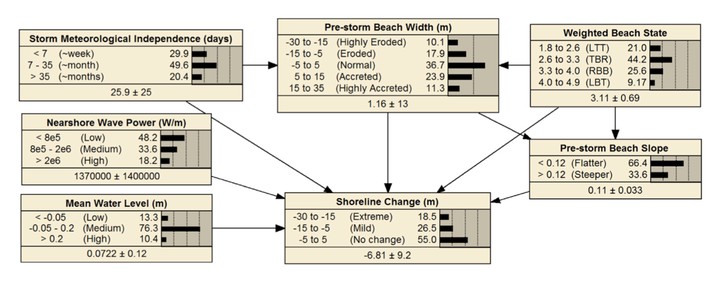Bayesian Networks in coastal engineering: Distinguishing descriptive and predictive applications

Abstract
Bayesian networks (BNs) are increasingly being used to model complex coastal processes due to their ability to integrate non-linear systems, their transparent probabilistic framework, and low computational cost. A BN may be suited to descriptive or predictive application. Descriptive BNs are highly calibrated models that are useful for better understanding the physics and causal relationships driving a system. Predictive BNs are generalisations of a system that have skill at predicting outside of the training domain. The predictive and descriptive usefulness of a BN depends on its complexity and the amount of data available to train it, but there is often a trade-off; higher descriptive skill comes at the cost of reduced predictive skill. To demonstrate the differences between predictive and descriptive BNs in a coastal engineering context, a BN to predict shoreline recession caused by coastal storm events is developed and tested using an extensive 10-year dataset incorporating 137 individual storms events monitored at Narrabeen-Collaroy Beach, Australia. A parsimonious approach to BN development is used to separately determine the optimum predictive and descriptive BNs for this dataset. Results show that for this dataset two quite different BNs can be developed; one that is optimized to achieve the highest predictive skill, and a second network that is optimized to maximize descriptive skill. The optimum predictive BN is found to comprise 3 nodes (variables) and can predict the shoreline recession caused by unseen storm events with a skill of 65%. The optimum descriptive BN is composed of 5 nodes and can reproduce 88% of the training dataset, but with more limited predictive capabilities. The uses and limitations of these two different approaches to BN formulation are illustrated with example applications to coastal process modelling. It is anticipated that the insights provided in this paper will help to clarify the further development of Bayesian Networks applied to coastal modelling.